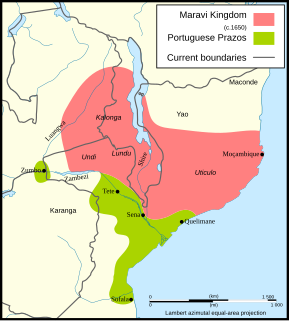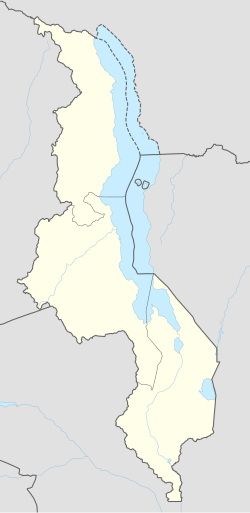The Adhola people, also known as Jopadhola, are an ethnic group of Uganda. They live in Tororo District in Eastern Uganda and comprise about eight percent of the country's total population. They speak Dhopadhola,, which belongs to the Western Nilotic branch of the Nilo-Saharan language family. They are primarily pastoralists. The Jopadhola call their land Padhola which, according to historian Bethwell Ogot, is an elliptic form of “Pa Adhola” meaning the "place of Adhola", the founding father of the Jopadhola people. Officially, land of the Adhola is called Padhola, but the Baganda who misinterpret 'Widoma' - a Dhopadhola word for 'war cry' meaning 'You are in trouble' refer to the Jopadhola as "Badama". The social structure of the Jopadhola can be described as polysegmentary because there is no traditional centralized government and its organization is limited to a clan called Nono. There are over 52 clans, each with cultural practices, common ancestry and a distinct lineage.
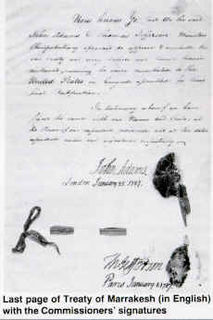
In December 1777, the Moroccan Sultan Muhammad III included the United States in a list of countries to which Morocco’s ports were open. Morocco thus became the first country whose head of state publicly recognized the newly independent United States. Relations were formalized with the Moroccan–American Treaty of Friendship(also known as the Treaty of Marrakesh) negotiated by Thomas Barclay in Marrakesh, and signed by American diplomats in Europe, Thomas Jefferson, John Adams with Sultan Muhammad III in 1786.

The Wassoulou Empire, sometimes referred to as the Mandinka Empire, was a short-lived (1878–1898) empire of West Africa built from the conquests of Malinke ruler Samori Ture and destroyed by the French colonial army.

Grace Emily Ogot was a Kenyan author, nurse, journalist, politician and diplomat. Together with Charity Waciuma she was the first Anglophone female Kenyan writer to be published. She was one of the first Kenyan members of parliament and she became an assistant minister.
Bethwell Allan Ogot is a historian from Kenya. He specialises in African history, research methods and theory. One of his works starts by saying that "to tell the story of a past so as to portray an inevitable destiny is, for humankind, a need as universal as tool-making. To that extent, we may say that a human being is, by nature, historicus.
Almami is a title of West African Muslim rulers, used especially in the conquest states of the 19th century. It is a contraction of Amir al-Mu'minin, usually translated "Commander of the Faithful" or "Emperor of the Believers". In the Arabic world, Amir al-Mu'minin is similar to Caliphs and to other independent sovereign Muslim rulers that claim legitimacy from a community of Muslims. It has been claimed as the title of rulers in Muslim countries and empires and is still used for some Muslim leaders.

Kenyan literature describes literature which comes from Kenya. Kenya has a long oral and written literary tradition, primarily in English and Swahili, the two official languages of the country.
The African Studies Association (ASA) is an association of scholars and professionals in the United States and Canada with an interest in the continent of Africa. Started in 1957, the ASA is the leading organization of African Studies in North America. The associations headquarters are Rutgers University in New Jersey. The ASA holds annual conferences
Dr. Neville H. Chittick was a British scholar and archaeologist. He specialized in the historic cultures of Northeast Africa, and also devoted various works to the Swahili Coast.
The Swynnerton Plan was a colonial agricultural policy that appeared as a government report in 1954 in Kenya, aiming to intensify the development of agricultural practice in the Kenya Colony. The plan was geared to expanding native Kenyan's cash-crop production through improved markets and infrastructure, the distribution of appropriate inputs, and the gradual consolidation and enclosure of land holdings.
The Kingdom of Jolof, also known as Wolof and Wollof, was a West African rump state located in what is today the nation of Senegal. For nearly two hundred years, the Serer rulers of the Jolof Empire collected tribute from vassal kings states who voluntarily agreed to the confederacy. At the Battle of Danki, the Buurba Jolof was defeated by the lord of Kayor resulting in the rapid disintegration of the empire. Jolof survived as a meager state, unable to prosper from the Atlantic trade between its former vassal territories and the Portuguese.
The Antesaka, also known as Tesaka, or Tesaki, are an ethnic group of Madagascar traditionally concentrated south of Farafangana along the south-eastern coast. They have since spread more widely throughout the island. The Antesaka form about 5% of the population of Madagascar. They have mixed African, Arab and Malayo-Indonesian ancestry, like the western coastal Sakalava people of Madagascar from whom the clan derives. They traditionally have strong marriage taboos and complex funeral rites. The Antesaka typically cultivate coffee, bananas and rice, and those along the coast engage in fishing. A large portion of the population has emigrated to other parts of the island for work, with an estimated 40% of emigrants between 1948 and 1958 permanently settling outside the Antesaka homeland.
The Antemoro are an ethnic group of Madagascar living on the southeastern coast, mostly between Manakara and Farafangana. Numbering around 500,000, this ethnic group traces its origins back to Arab settlers who arrived from Mecca in the 15th or 16th century. Upon settling in Madagascar, these Arabs converted the Antemoro to Islam; the religion was soon abandoned in favor of traditional beliefs and practices associated with respect for the ancestors, although remnants of Islam remain in fady such as the prohibition against consuming pork. In the 16th century an Antemoro kingdom was established, supplanting the power of the earlier Zafiraminia, who also descended from Arab seafarers.
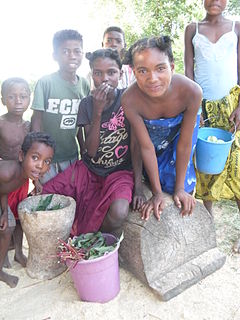
The Mahafaly are an ethnic group of Madagascar that inhabit the plains of the Betioky-Ampanihy area. Their name means either "those who make holy" or "those who make happy", although the former is considered more likely by linguists. In 2013 there were an estimated 150,000 Mahafaly in Madagascar. The Mahafaly are believed to have arrived in Madagascar from southeastern Africa around the 12th century. They became known for the large tombs they built to honor dead chiefs and kings. Mainly involved in farming and cattle raising, they speak a dialect of the Malagasy language, which is a branch of the Malayo-Polynesian language group.

The Zafisoro are a Malagasy ethnic group inhabiting a portion of the southeastern coast of Madagascar. The Zafisoro speak a dialect of the Malagasy language, which is a branch of the Malayo-Polynesian language group derived from the Barito languages, spoken in southern Borneo.
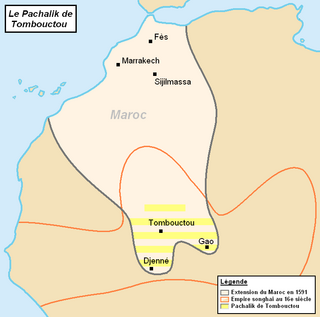
The Pashalik of Timbuktu was a West African political entity that existed between the 16th and the 19th century.

Lingeer Fatim Beye Joos Fadiou was a 14th-century Serer princess and queen (Lingeer) from the Kingdom of Sine. She is the matriarch and early ancestor of the Joos Maternal Dynasty of Waalo. She is usually regarded by some sources as the founder of the Joos Maternal Dynasty. The pre-colonial Kingdoms of Sine and Waalo now lies within present-day Senegal. Her surname is Beye (English-Gambia) or Bèye (French-Senegal). Joos Fadiou is her maternal clan. In Serer, "Fa-tim" means "the maternal clan of..."

Karamokho Alfa was a Fula religious leader who led a jihad that created the Imamate of Futa Jallon in what is now Guinea. This was one of the first of the Fulbe jihads that established Muslim states in West Africa.

St Regulus Hall is a hall of residence at the University of St Andrews in St Andrews, Fife, Scotland. It is located on Queen's Terrace, nearby to St Mary's College. The hall was built in 1868 and currently accommodates approximately 170 students.
